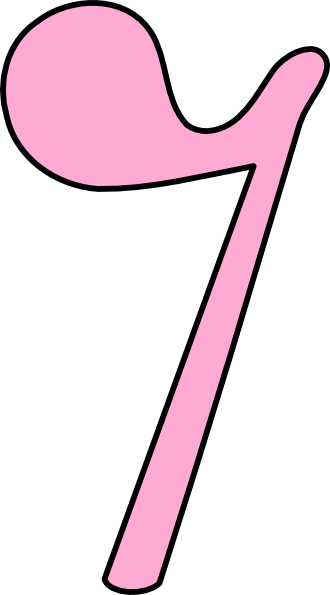
To count eighth notes, set your metronome to let’s say, 60 beats. When there are multiple notes, instead of flags, the notes are beamed together, as shown in the diagram with notes beamed together below (left). For stems facing down, the flags start at the bottom of the stem and curve up. For stems facing up, the flags starts at the top and curves down. That way voices/parts are clear to the player and singer.Īs for the flags, they are drawn on the right side of the stem and curve to the right. Stems for the upper voice’s notes are drawn facing up while stems for the next lower part’s notes are drawn facing down, no matter what position they are on the staff. Stems can be used to indicate voicings or parts. When they are on or above the middle line, the notes are drawn with stems on the left of the note head, facing down.

Quarter and half notes have no flag.) Generally, (like all notes with stems) when quavers are below the middle line of the staff, they are drawn with stems to the right of the notehead, facing up. How do you draw an 8th note? It is notated with an oval, filled-in note head and a straight note stem with one flag. Highly Recommended: Click here for one of the BEST piano/keyboard courses I’ve seen online. Two of these notes make up a quarter note. In 4/4 time a whole note lasts for four beats.
It lasts a quarter of the duration of a half note (minim) and half of the duration of a quarter note (crotchet). In the last 3 days there were 0 new threads and 0 reply posts.An eighth note, also called a quaver is a note played for one eighth the duration of a whole note (semibreve). There are a total of 403,820 posts in 58,165 threads. As always.Ĭurrently it is Saturday, J9:49 AM (GMT -5) Thanks everyone (esp David).much appreciated. And I am more accustomed to seeing it as two rests. But most scores divide the dotted quarter rest into a quarter rest and 8th rest. I'm trying to avoid dotted quarter rests in 6/8 meter, but it would not be proper for me to claim that it is wrong. The calligrapher could not make up his/her mind. In the old Kalmus (or similar publisher) score of Dvorak's 7th symphony, movement one (in 6/8 meter) that is written by hand in ink, there is an early measure where there are two 8th rests followed by two 16th notes in one staff and there is a quarter rest followed by two 16th notes directly below it. And what if the pick up is two 16th notes? Some scores will use to 8th rest preceding this and some will use a quarter rest.Īnd in some scores there is no consistency from page to page. Some scores will place two 8th rests followed by an 8th note for the first beat but will use a quarter rest followed by an 8th rest for the second beat. Most scores will use a quarter rest followed by an 8th note in 6/8 meter, regardless of whether it is the first beat or the second beat. What is somewhat more difficult to find a consensus is when the pick up is a note in 6/8 meter: Now in 9/8 meter and 12/8 meter the dotted quarter rest is considered by almost all references to be perfectly fine. Yet, I find that a lot of well done modern scores still use a quarter rest and 8th rest in 6/8 meter. A recent notation textbook mentions that dividing the rest into a quarter rest and an 8th rest is unnecessary and the dotted quarter rest is perfectly fine. I have a Dover score of a Tchaikovski piece where in 6/8 there are many, many dotted quarter rests. There are many, many scores where in 6/8 meter the dotted quarter rest is replaced by a quarter rest and eighth rest. In 6/8 there is some variation as to how it is done.

In 2/4, 3/4 and 4/4 meter, one never dots rests. The use of the dotted half-rest is advisable only in Temporal length however, in simple time the half and quarter rest are "All rests may be dotted exactly as notes are dotted to increase their That's the simple rule that I follow, and I Quarter rest + eight rest says you enter on No, they are OK in triple meters like 6/8, to What do major publishers prefer? Does anyone care? I am inclined to notate it quaver rest, semiquaver rest, semiquaver.but is the dotted quaver rest okay?ĭo you have any thoughts? What does Ross say? (he seems to have something to say about everything). I am doing a songbook, and the arranger has notated a rhythm where there is a dotted quaver rest at the start of the bar, followed by a semiquaver. Are they always wrong? Are they right but frowned upon? Are they okay in some cases and not others? I'm sure this is a very basic question, but I don't have a book handy that will give me the answer.ĭotted rests.
#Quaver rest windows#
MakeMusic Forum > Public Forums > Finale - Windows - FORUM HAS MOVED! > Dotted rests


 0 kommentar(er)
0 kommentar(er)
